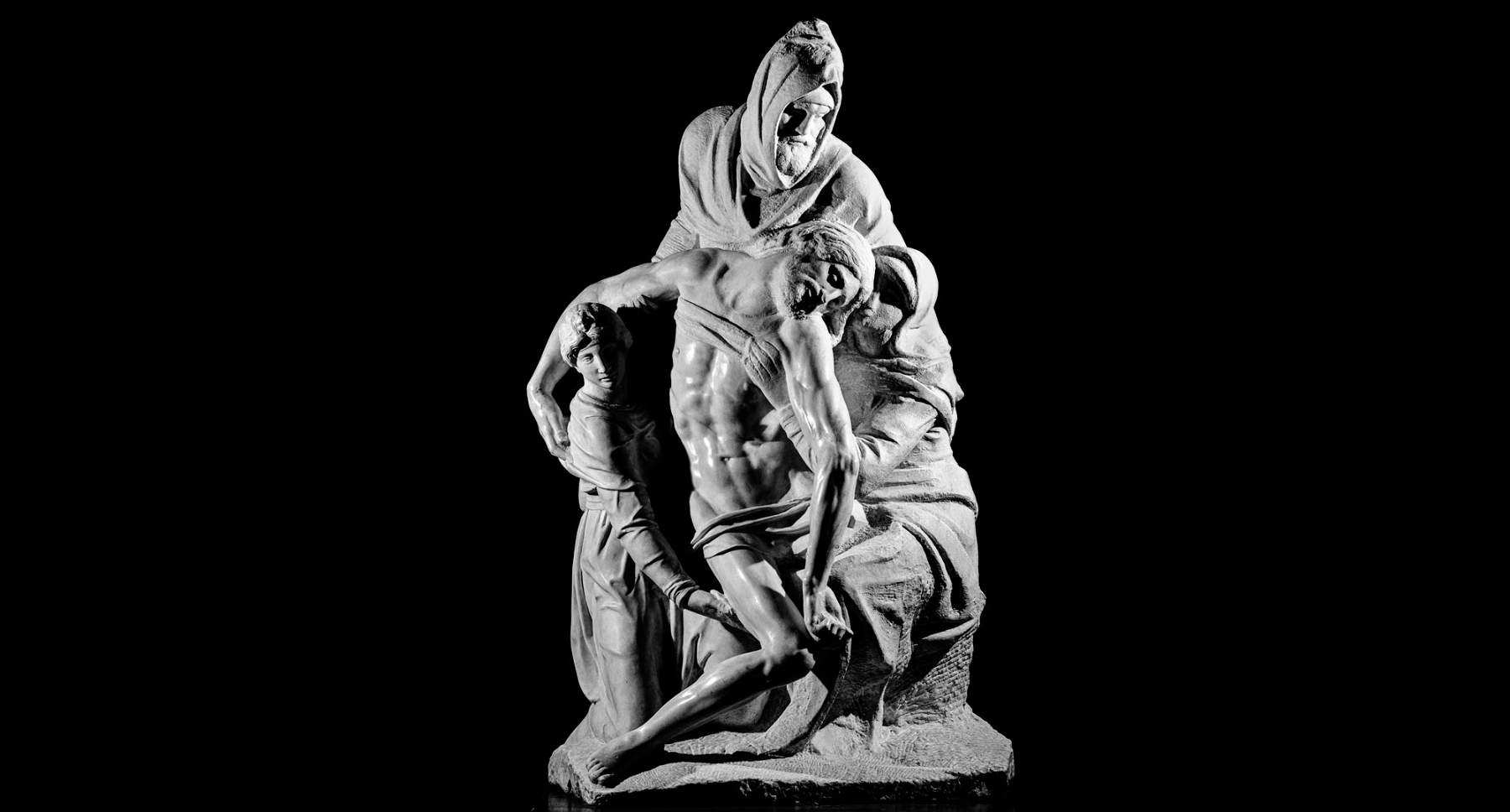Florence, the Pietà Bandini photographed by Aurelio Amendola on display at the Duomo Museum
Following the completion in September 2021 of the restoration of Michelangelo Buonarroti’s Pieta Bandini , which is kept in the Museo dell’Opera del Duomo in Florence, theOpera di Santa Maria del Fiore commissioned a photographic campaign of the sculptural group from Aurelio Amendola, a celebrated interpreter of Michelangelo’s work and a world-renowned author. The fruit of this work, is now presented in the Museum’s Sala del Paradiso, where an exhibition is being held for the first time, scheduled from September 8, 2022 to January 9, 2023, entitled La Pietà di Michelangelo. Aurelio Amendola’s gaze between naturalism and abstraction, curated by Antonio Natali. Thirty-two black-and-white photographic images, printed in large format (70 x 100 cm and 100 x 100), can be admired in the exhibition. A sequence of images intended on the one hand to touch the senses of anyone who looks at his photos, and on the other to help a critical eye discover unseen details.
Amendola returns to interpret the Bandini Pietàafter photographing it in 1997 and finishing the delicate restoration, commissioned and directed by the Opera di Santa Maria del Fiore and financed by the nonprofit Friends of Florence Foundation, which was able to restore beauty to one of the great artist’s most intense and tormented masterpieces.
“Sculpture is everything to me, working with lights I try to make it come alive, make it speak. This has always been my intent,” says Amendola, who chose not to use diffuse lights to portray the Bandini Pietà because, writes Antonio Natali: “There is no light that can homogeneously envelop such a tormented material. And Aurelio not only seconds the original invention but further strengthens, indeed, the light and conversely increasingly abuzzes the darks. And the shadows slam with sharp profiles on the surfaces, clear to whiteness. And the heart of the relative shudders with it.”
“Amendola,” Natali continues, “starting from the whole, advances with the photographic lens until he wedges himself into the voids, the undercuts, the meanders of a restless matter. He moves through it as if it were - his - an autopsy examination; and, as in a dissection, he uncovers and lays bare even repulsive sores that have escaped the eye, as in that image taken from the side, from the right, that denudes the vertical section of the thigh, cleanly severed, with the shameless revelation of a square hole for the pivot of a limb transplant.Strongly impactful photo; not least because in a single view Aurelius poetically exhibits the full range of stages of marble working: from the freshly hewn to the completed, from the shapeless anchor leg of Mary that is,-rough and rough like an early 20th-century Parisian sculpture (by Modigliani or BrâncuÈ™i or Henri Gaudier-Brzeska),-to the torso of Christ, polished and shining like a long-polished stone. Aurelius is surely fascinated by Michelangelo’s ability to be suave and yet, at the same time, powerful.”
Amendola has photographed all of the great Renaissance artist’s sculptural works throughout his long career. Beginning with his first book in 1994, An Eye on Michelangelo. The Medici Tombs in the New Sacristy of S. Lorenzo in Florence after the restoration, which won him the Oscar Goldoni Prize for the best photographic book of the year, to the famous images of the David photographed, as never before, in its full sensuality. With the David, Amendola “inaugurated” a new way of recounting Michelangelo that became a point of reference for all his subsequent images.
In addition to Michelangelo, Amendola devoted himself to ancient sculpture, which he declares “to be his passion.” A passion born while photographing Giovanni Pisano’s Pulpit of Sant’Andrea in Pistoia in 1969. Amendola is also a great interpreter of the contemporary, able to empathize with artists, absorbing their style and intensity. His portraits of some of the greatest contemporary and twentieth-century artists attest to this: from Alberto Burri to Marino Marini, with whom he had a special relationship, Mario Ceroli, Giorgio De Chirico, Nicola De Maria, Jannis Kounellis, Roy Lichtenstein, Piero Manzù, Mimmo Paladino, Claudio Parmiggiani, Michelangelo Pistoletto, Giò Pomodoro, Gianni Ruffi, Mario Schifano, Giuliano Vangi, Emilio Vedova, to name but a few. Andy Warhol’s portraits are famous, including those made in New York shortly before his death, probably the last portraits of him.
The exhibition will be accompanied by a catalog produced by La Mandragora casa editrice.
 |
| Florence, the Pietà Bandini photographed by Aurelio Amendola on display at the Duomo Museum |
Warning: the translation into English of the original Italian article was created using automatic tools. We undertake to review all articles, but we do not guarantee the total absence of inaccuracies in the translation due to the program. You can find the original by clicking on the ITA button. If you find any mistake,please contact us.





























